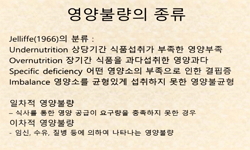Objective: This study aims to investigate body type classification of Korean female according to their age for designing driver’s seat. Background: Driver’s seat has major impacts on comfortable driving, driving performance, and purchase decision....
http://chineseinput.net/에서 pinyin(병음)방식으로 중국어를 변환할 수 있습니다.
변환된 중국어를 복사하여 사용하시면 됩니다.
- 中文 을 입력하시려면 zhongwen을 입력하시고 space를누르시면됩니다.
- 北京 을 입력하시려면 beijing을 입력하시고 space를 누르시면 됩니다.
https://www.riss.kr/link?id=A101374851
- 저자
- 발행기관
- 학술지명
- 권호사항
-
발행연도
2015
-
작성언어
Korean
- 주제어
-
자료형태
학술저널
- 발행기관 URL
-
수록면
209-213(5쪽)
- 제공처
-
0
상세조회 -
0
다운로드
부가정보
다국어 초록 (Multilingual Abstract)
Objective: This study aims to investigate body type classification of Korean female according to their age for designing driver’s seat. Background: Driver’s seat has major impacts on comfortable driving, driving performance, and purchase decision. Therefore, it is important to design the seat with consideration of body type of drivers. However, there is a lack of studies for the body type of female drivers. Method: First of all, 43 dimensions, which are related to driver’s seat design, among 125 static body dimensions were selected from a sample of 2180 Korean female anthropometric data. The 43 dimensions were factorized. Lastly, clustering analysis was conducted based on three age groups of 20s, 30s and 40s, and 50s. Results: Four factors were found from the factor analysis; thickness of torso, length of torso, length of arms and legs, size of hip. Each age group showed four major body types from the cluster analysis. Conclusion: The four major body types were different across the age groups. The age group 20s had dominant body type of relatively bigger upper body compared to lower body. The dominant body type of rest two groups were a balanced type over both upper and lower bodies. Application: It can be helpful for understanding important factors of drivers’ body type on designing comfortable driver’s seat. Further it is expected to be applied on designing other products which require the understanding of characteristics of body type.
목차 (Table of Contents)
- ABSTRACT
- 1. Introduction
- 2. Method
- 3. Results
- 4. Conclusion
- ABSTRACT
- 1. Introduction
- 2. Method
- 3. Results
- 4. Conclusion
- References
동일학술지(권/호) 다른 논문
-
A Study on Model Converged Industry of the User Experience to Provide Value to User
- 대한인간공학회
- Chang Beom Shin
- 2015
-
Android User Interface Analysis with Ergonomic and Quantitative method
- 대한인간공학회
- Soo-chan Jee
- 2015
-
A creative idea generation process for radical innovation from the user experience perspective
- 대한인간공학회
- Heekyung Moon
- 2015
-
- 대한인간공학회
- Hyeji Jang
- 2015




 DBpia
DBpia



